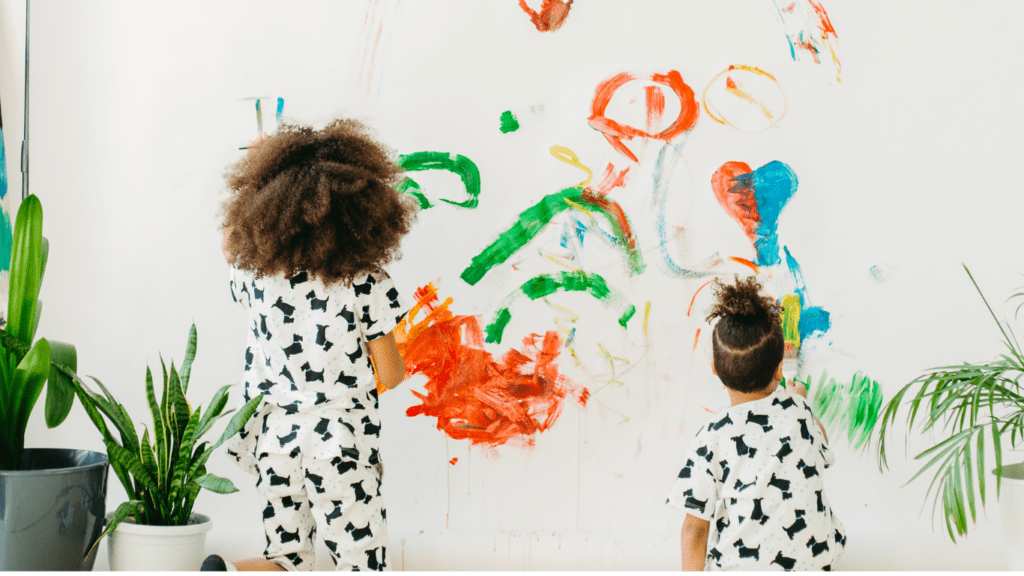Understanding Art Therapy
Art therapy uses creative practices like painting and drawing to help children with special needs. It’s not just about creating art; the therapeutic process plays a critical role in development and healing.
What Is Art as Therapy?
Art as therapy involves using artistic methods to facilitate personal growth. During sessions, children create visual art to express emotions they may not easily articulate through words. This process helps them explore their feelings, improve self-awareness, and cope with stress. Art therapy can include various media: paint, clay, and crayons.
- Self-Expression: Allowing children to communicate thoughts and emotions through art.
- Nonverbal Communication: Providing a medium other than speech to express complicated feelings.
- Process Over Product: Focusing on the act of creation rather than the final artwork.
- Client-Centered Approach: Tailoring activities to meet the unique needs of each child.
- Therapeutic Relationship: Building trust and a safe space between the therapist and child.
Benefits of Art Therapy for Children with Special Needs
Art therapy offers several key benefits for children with special needs, providing crucial support in their development.
Enhancing Communication Skills
Art therapy enhances communication skills for children with special needs. Creating art gives them an alternative way to express thoughts and feelings when verbal communication isn’t easy.
For example, drawing or painting can help children convey emotions, ideas, or experiences that they might struggle to articulate with words. This visual form of communication often builds a stronger understanding between the child and others.
Boosting Emotional Expression
Art therapy boosts emotional expression in children with special needs. Through activities like:
- sculpting
- painting
children can safely explore and express their emotions.
Art acts as a therapeutic outlet, helping children process complex feelings such as anger, fear, and joy. Expressing emotions through creative mediums can reduce anxiety and enhance overall emotional well-being.
Improving Motor Skills
Art therapy improves motor skills in children with special needs. Activities such as drawing, cutting, and assembling art projects help refine both fine and gross motor skills. For instance, painting with a brush or using modeling clay involves precise hand movements and coordination. Regular participation in these activities strengthens muscle control and dexterity, leading to better overall physical development.
Art Therapy Techniques and Activities

Art therapy uses diverse mediums to help children with special needs express themselves creatively and enhance their developmental skills. Various techniques and activities offer unique benefits tailored to individual needs.
Painting and Drawing
Painting and drawing form the foundation of art therapy. These activities allow children to experiment with colors, shapes, and lines, facilitating non-verbal communication.
For example, children can convey emotions like happiness or frustration through the use of bright or dark colors. Drawing helps refine fine motor skills as children control pencils and brushes. Moreover, creating a visual narrative enables children to articulate their thoughts and experiences, offering them a sense of accomplishment and boosting self-esteem.
Sculpting and Clay Work
Sculpting and clay work engage tactile senses and promote physical and emotional development. Working with clay, children manipulate textures and shapes, which improves hand strength and coordination. For instance, rolling, pinching, and molding clay refine fine motor skills.
Additionally, sculpting requires planning and problem-solving, helping children with special needs develop cognitive skills. The tangible nature of clay offers sensory stimulation, making it an effective medium for children with sensory processing issues. Sculpting also provides an avenue for self-expression, allowing children to bring their inner worlds to life in three-dimensional forms.
Case Studies and Success Stories
Sharing success stories demonstrates the impactful results of art therapy for children with special needs.
Stories from Schools
Many schools have integrated art therapy into their special education programs. At Hope Academy, students who participated in art therapy showed significant improvements in communication. One student, initially non-verbal, began using colors and shapes to express emotions, eventually leading to verbal communication.
At Bright Future School, children with autism spectrum disorder actively engaged in group art projects. These projects fostered social interaction, reducing feelings of isolation. Teachers noted that students seemed more focused and cooperative during other classroom activities.
Insights from Therapy Sessions
In private therapy sessions, art therapists create personalized plans to address each child’s unique needs. For instance, during a session with a child diagnosed with ADHD, structured art activities improved concentration and task completion. Techniques like structured drawing and painting, followed by free expression, helped the child maintain focus longer.
With children facing anxiety, sessions incorporated calming art exercises, like mandala coloring. One child who struggled with severe anxiety used these exercises to regulate emotions, leading to a noticeable decrease in anxiety symptoms over a few months. Parents and therapists observed better coping skills and increased resilience during stressful situations.

 Anna Freehill, a key contributor to Avant Garde Artistry Hub, plays a vital role in shaping the platform’s vision. As an author and collaborator, she helps bridge the worlds of art and technology, offering insightful articles that guide artists through the rapidly evolving creative landscape. Anna’s dedication to highlighting art's therapeutic value has contributed to the platform’s focus on mental and emotional well-being through creative expression.
Her involvement in building Avant Garde Artistry Hub has been instrumental in providing valuable resources to artists seeking to enhance their careers. Whether through her writing on business strategies or her support in platform development, Anna is committed to fostering a space where artists can thrive and embrace the future of art.
Anna Freehill, a key contributor to Avant Garde Artistry Hub, plays a vital role in shaping the platform’s vision. As an author and collaborator, she helps bridge the worlds of art and technology, offering insightful articles that guide artists through the rapidly evolving creative landscape. Anna’s dedication to highlighting art's therapeutic value has contributed to the platform’s focus on mental and emotional well-being through creative expression.
Her involvement in building Avant Garde Artistry Hub has been instrumental in providing valuable resources to artists seeking to enhance their careers. Whether through her writing on business strategies or her support in platform development, Anna is committed to fostering a space where artists can thrive and embrace the future of art.